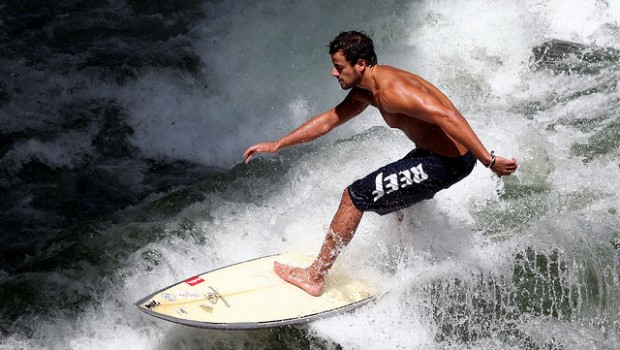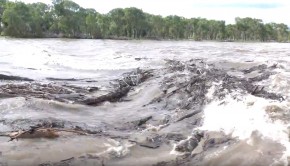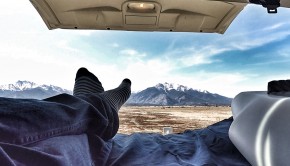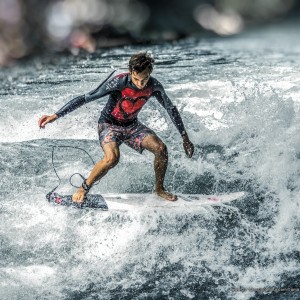
Published on September 4th, 2012 | by PhilB
Photo by purplesubmarine @ flickr | 0The Very Basics of River Surfing
Most newcomers and ocean surfers are wondering about one particular question: “How similar is river surfing to ocean surfing?” Some young pups think that it may be similar to long boarding on shoulder-to-overhead ocean waves, others see similarities between (rope aided) river surfing and wakeboarding. The good news is that river surfing offers the best of both worlds.
As far as boards go, all shapes that allow to catch and rip smaller, mushier waves are good to start with when getting into river surfing. Certain river waves can also be surfed up to 8′ fun boards but the problem with longer boards is usually the increased risk of nose diving. Especially beginners often see their board’s nose pearling into the trough in front of them. More experienced riders surf high performance eggs and shorter fish shapes for that reason. Ideally, ambitious river surfers would look for a short fish board starting at around 5’8″ which handles the slower speed of river waves better and is still short enough to whip around on a smaller wave.
River surfing safety tips
Finally, river surfers must be ware of the specific risks which are inherent to this sport. What cannot be stressed enough, is that it is important to first review the water, the river wave(s), and all associated dangers, both visible (floating on the water surface, ropes) and submerged under the water (rocks). Especially beginners and surfers who a are new to a spot are well advised to review these conditions before heading out to surf. By not doing so, you may put your own life at risk and more importantly the lives of those who may have to rescue or recover you.
















